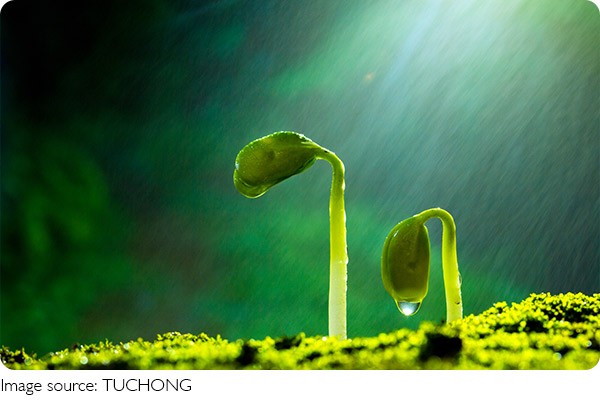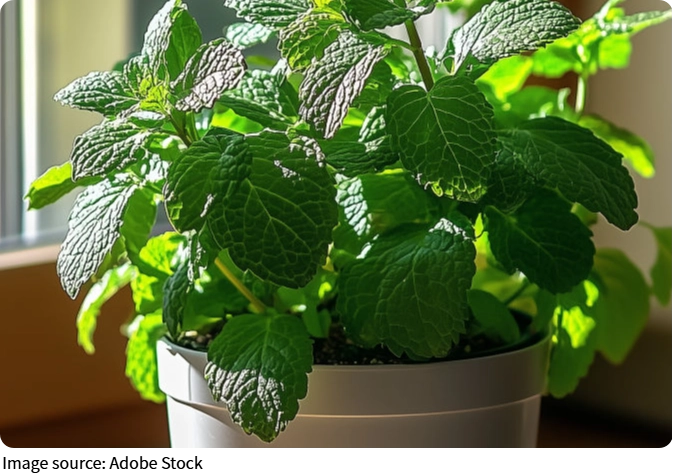Plants Art and Design

Plants have long been a source of inspiration for artists and designers, offering an endless array of colors, shapes, textures, and patterns that fuel creativity.
From the sweeping curves of vines to the intricate detail of flower petals, the natural world has a way of speaking to the artist's eye and imagination.
Whether depicted in painting, sculpture, fashion, or architecture, plants have left an indelible mark on artistic expression throughout history. This article explores how plants serve as an enduring muse in art and design, shaping not just visual aesthetics but also influencing the philosophy and principles of various creative fields.
The Timeless Influence of Plants in Art
Throughout history, plants have been central to artistic representation, serving as symbols of life, beauty, and growth. In classical paintings, botanicals were often featured in still life compositions, meticulously detailed to show off the artist's technical skill and the richness of nature.
Famous works like those of the Dutch Masters, such as Jan Davidsz de Heem, show plants not just as decoration, but as intricate elements that represent the cycles of life.
The use of plants in art has continued to evolve, particularly in the realm of modern and contemporary art. Botanical motifs have been embraced by artists as symbols of resilience and transformation. For instance, the art of Georgia O'Keeffe, known for her larger-than-life flowers, explores the beauty and sensuality of plants, turning them into powerful metaphors for growth, and nature's mysteries.
Similarly, Japanese artist Yayoi Kusama's use of polka dots and botanical motifs in her installations echoes nature's infinite patterns, drawing attention to the vastness of the natural world and our place within it.
Plant Shapes and Forms: A Study in Visual Design
In design, the organic shapes and forms of plants are translated into everything from architecture to product design. The curvature of leaves, the spirals of vines, and the geometric arrangement of flowers have all been used to inspire innovative structures and objects.
One of the most influential movements in this regard is biomimicry—designing based on natural forms and processes. This approach often takes cues from plant structures to create functional, sustainable designs.
The Art Nouveau movement at the turn of the 20th century drew heavily on plant forms. Designers like Antoni Gaudí and Gustav Klimt created works inspired by the fluid lines of nature, with plants forming the backbone of many of their intricate designs. Gaudí's architecture, particularly in the Sagrada Familia, integrates plant-inspired curves and patterns, making nature an inseparable part of the building's structure.
In modern fashion, designers are also incorporating plant-inspired shapes. The curvature and flow of botanical elements are visible in garments that mimic natural structures, from floral embroidery to clothing patterns inspired by the geometry of leaves. Designers such as Alexander McQueen have frequently used plant imagery in their collections, blending nature with high fashion in ways that provoke thought about the connection between nature and human creativity.
The Symbolism of Plants in Design and Art
Beyond their aesthetic qualities, plants carry rich symbolic meaning that artists and designers tap into to convey deeper messages. In many cultures, plants are imbued with significance, representing everything from fertility and love to transformation and regeneration.
For example, the lotus flower is a common symbol of purity and enlightenment in many cultures, often featured in art and design to represent spiritual growth. In Western art, roses have long been associated with love and beauty, while thorns symbolize pain or suffering.
Contemporary artists and designers frequently use plant symbolism to explore themes of environmentalism, sustainability, and human relationships with nature. For instance, the use of reclaimed wood or plant-based materials in design can serve as a commentary on sustainability, urging consumers to rethink their impact on the environment.
Designers working with plant-based fabrics, such as bamboo, are not only inspired by the plant forms themselves but are also making statements about the need for more eco-friendly, sustainable production methods in fashion.
The power of plants as symbols also extends into art therapy and wellness design. Botanicals in interior design are often used to create spaces that promote healing, calmness, and creativity. Plants in healthcare environments, for example, have been shown to reduce stress and improve the overall well-being of patients.
These spaces are designed with an understanding of how plant imagery and live plants can enhance the psychological health of individuals.
Modern Technologies: Plant-Inspired Designs in Digital and Product Art
The influence of plants has also crossed into digital design and the world of products, where their shapes and forms are integrated into virtual worlds, apps, and everyday items. Digital artists use plant imagery to create realistic, nature-inspired landscapes or abstract designs that evoke a sense of serenity or harmony with nature.
The use of plant shapes in logos, app interfaces, and digital art conveys a sense of organic growth, health, and vitality.
Product design has seen an increasing incorporation of plant-inspired elements, particularly in eco-conscious brands. Sustainable packaging design often takes inspiration from the shapes of plants, utilizing biodegradable materials that mimic plant fibers and textures.
Designers like Yves Béhar have incorporated the concept of biodesign, where products are designed with natural growth patterns in mind, and the materials themselves are derived from plants or their by-products. This design approach not only elevates the aesthetic of products but also supports the idea of integrating more sustainable and environmentally friendly practices in design.
The Future of Plant-Based Art and Design
As the world increasingly turns towards sustainability and environmental awareness, plants will continue to be a major source of inspiration in art and design. The integration of living architecture—structures that incorporate living plants as part of their aesthetic and functional design—is likely to become more prominent.
We can expect to see more products, buildings, and urban spaces that mimic nature's organic forms, blending creativity with environmental consciousness.
Another exciting future possibility is the use of plant-based materials in design. From plant-based plastics to biodegradable fabrics, the art and design world will continue to explore new ways to reduce waste while incorporating plant-inspired aesthetics into everyday life. Artists and designers are already experimenting with using plants themselves as materials, creating sculptures or installations made from living plants, moss, and organic matter.

Conclusion: Nature's Infinite Influence
Plants have remained a perennial source of inspiration for artists and designers, offering an endless well of creativity, symbolism, and beauty. Whether used as a direct aesthetic element, a symbolic reference, or a functional source for innovative design, plants influence every creative discipline.
Their forms and structures offer solutions for both art and sustainability, while their symbolism resonates deeply with human experiences and emotions. As the boundaries between nature and design continue to blur, the influence of plants on the world of art and design will only grow, encouraging us to look at the natural world as a rich source of inspiration for the future.


